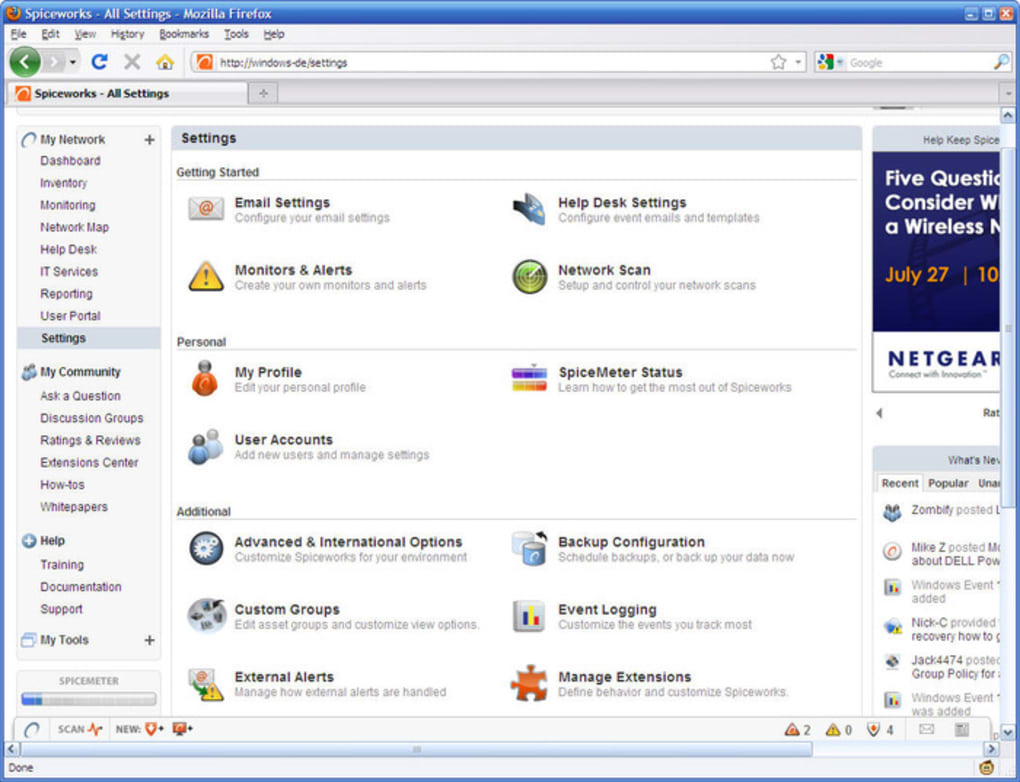

If only a few errors occurred, you can start browsing your inventory.ġ2. Usually Spiceworks will give you a good starting point, like indicating that a certain port is not available.ġ1. If many error messages are displayed, try to determine what caused them. Allow some time for the scan to execute.ġ0. You can go into the configuration later to provide logins for specific devices.ĩ. If you use different passwords for your network devices, just provide the one that is the most used. "Unix" is the one you want to use to detect VMware virtual machines. Here is where you need to supply the administrator credentials for Windows, Unix, and switches/printers (via SNMP). Provide the credentials for the different account types. Click "Inventory" to start scanning your network.Ĩ. If you already have a Spiceworks account, you still need to create a new user unless you want to copy the database information of an existing installation.Ħ. If your firewall asks, allow Spiceworks to access your network the corresponding executables are spiceworks-httpd.exe and spiceworks-finder.exe.ĥ. Start up the application (via the shortcut).Ĥ. Accept the terms and choose the installation path.ģ. Specify the port on which you’d like it to run (port 80 is the default setting).Ģ. The reason for this is that Spiceworks does require quite some processing power depending on the size of your network.ġ. Spiceworks installation ^Īfter you download the latest version, execute the installer on either a server or a powerful PC. This is likely the most important part, as Spiceworks uses this service to get all of its information. Third and finally, you need to make sure that the WMI service is enabled and running on all computers. I suggest doing this using Group Policies so you’ll be sure everything is configured properly on all PCs.
#SPICEWORKS DOWNLOAD DESKTOP WINDOWS#
Second, make sure you have exception rules in your firewalls to allow the following: Ping, Windows Management Instrumentation (WMI), and RDP.


 0 kommentar(er)
0 kommentar(er)
